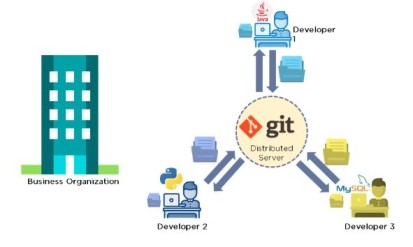Version control is a crucial aspect of software development that helps developers manage changes to code over time. Git is one of the most popular version control systems in use today, renowned for its speed, flexibility, and powerful branching capabilities. This article will provide an in-depth look at Git, its features, benefits, and best practices.
What is Version Control?
Version control, also known as source control, is a system that records changes to files over time so that specific versions can be recalled later. It allows multiple developers to work on a project simultaneously without overwriting each other’s changes. Key concepts in version control include:
- Repository (Repo): A storage space where all the files and their revision history are kept.
- Commit: A snapshot of changes made to the files in the repository at a specific point in time.
- Branch: A separate line of development, allowing for experimentation without affecting the main codebase.
Introduction to Git
Git was created by Linus Torvalds in 2005 for managing the development of the Linux kernel. It is a distributed version control system, meaning that every developer has a complete copy of the repository, including its entire history. This allows for greater collaboration and offline work.
Key Features of Git
- Distributed Architecture: Each developer has a full copy of the repository, which allows for offline work and reduces reliance on a central server.
- Branching and Merging: Git makes it easy to create branches for new features or experiments and merge them back into the main branch when ready.
- Staging Area: Git allows users to stage changes before committing them, giving developers more control over which changes are included in a commit.
- Commit History: Git maintains a complete history of all changes made to a repository, allowing developers to track progress and revert to previous versions if needed.
- Collaboration: Git supports collaboration among multiple developers through pull requests and code reviews, enhancing code quality and teamwork.
- Security: Git uses SHA-1 hashing to ensure the integrity of the code and its history, making it difficult to tamper with changes.
Benefits of Using Git
- Efficiency: Git is designed to handle large projects with speed and efficiency, making it suitable for both small and large teams.
- Collaboration: Git facilitates teamwork by allowing multiple developers to work on the same project simultaneously without conflicts.
- Version Tracking: Git’s detailed commit history allows developers to understand the evolution of the codebase and makes it easy to revert changes if necessary.
- Branching and Experimentation: Developers can create branches to experiment with new features or ideas without affecting the main codebase.
- Backup: With distributed repositories, each developer has a backup of the entire project, reducing the risk of data loss.
Common Git Commands
- git init: Initializes a new Git repository.
- git clone: Creates a copy of an existing repository.
- git add: Stages changes to be included in the next commit.
- git commit: Records the staged changes in the repository history.
- git status: Displays the status of the working directory and staging area.
- git push: Uploads local changes to a remote repository.
- git pull: Fetches and integrates changes from a remote repository to the local repository.
- git branch: Lists all branches in the repository or creates a new branch.
- git merge: Combines changes from one branch into another.
- git log: Displays the commit history of the repository.
Best Practices for Using Git
- Commit Often: Make frequent commits to capture changes and progress. This helps in tracking the evolution of the project.
- Write Meaningful Commit Messages: Use clear and descriptive commit messages to explain the changes made, making it easier for others (and your future self) to understand the history.
- Use Branches: Create branches for new features, bug fixes, or experiments. This keeps the main branch stable and allows for easier collaboration.
- Pull Before You Push: Always pull the latest changes from the remote repository before pushing your changes to avoid conflicts.
- Keep Your Repository Clean: Regularly delete merged branches and organize your repository to maintain clarity.
- Use Tags: Use tags to mark important milestones or releases in your project. This provides a clear reference for versions.
- Utilize .gitignore: Use a
.gitignorefile to exclude files and directories that should not be tracked by Git, such as temporary files or sensitive information.
Conclusion
Git is an essential tool for modern software development, providing robust version control capabilities that facilitate collaboration, efficiency, and organization. By understanding Git’s features and implementing best practices, developers can improve their workflow, manage their code effectively, and contribute to successful project outcomes. Whether you are a novice or an experienced developer, mastering Git is a valuable skill that will enhance your development experience and productivity.
